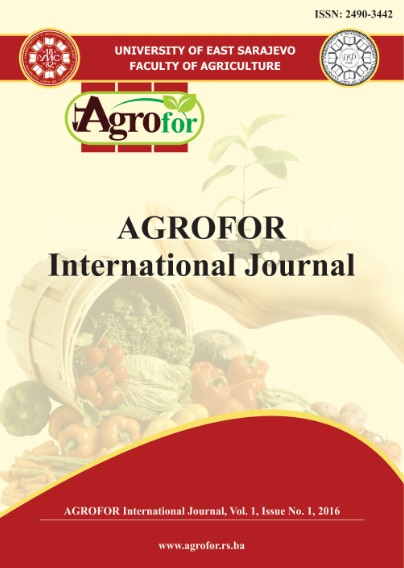DISSIPATION RATE AND RESIDUES OF ACETAMIPRID AND IPRODIONE IN SWEET CHERRY FRUITS
DOI:
https://doi.org/10.7251/AGRENG1601143LAbstract
A neonicotinoid insecticide acetamiprid and dicarboximide fungicide iprodione,
are used in sweet cherry for control of the major pest (Rhagoletis cerasi L.) and
pathogen (Monilia laxa). For the purpose of the safe consumption of agricultural
products after pesticide application, studies on their dissipation kinetics are
essential to work out their half-lives (DT50) and pre-harvest intervals (PHI).
However, there is a lack of information on the persistence of acetamiprid and
iprodione in sweet cherry fruits in different climatic conditions of production.
Therefore, the objectives of this study were to investigate the dissipation and
residues of acetamiprid and iprodione in sweet cherry fruits, as well as to evaluate
the validity of prescribed PHI for these pesticides. Field experiments were
conducted in a sweet cherry orchard, near Novi Sad, where acetamiprid and
iprodione were applied at a recommended concentration. At various time intervals,
from treatment to harvest, having in mind PHI (14 days for acetamiprid and 7 days
for iprodione) representative samples of sweet cherry fruits were collected.
Extraction of pesticides was carried out by QuEChERS method, followed by
HPLC-DAD analysis. The method was validated in accordance with the
SANCO/12571/2013 document and was used the determination of pesticides in
real sweet cherry samples. During the study period, the concentration of
acetamiprid and iprodione decreased from 0.52 mg/kg to 0.11 mg/kg and from 0.29
mg/kg to 0.07 mg/kg, respectively. The dissipation of acetamiprid and iprodione
residues over the time fitted to the equation Ct=0.52-0.22t and Ct=0.29-0.20t, with DT50
of 3.15 and 3.47 days, respectively. Finally, the content of acetamiprid and
iprodione in sweet cherry samples, at the end of PHI, were below the maximum
allowed level specified by the Serbian (1.5 mg/kg and 3 mg/kg) and EU MRLs (1.5
mg/kg and 10 mg/kg).

